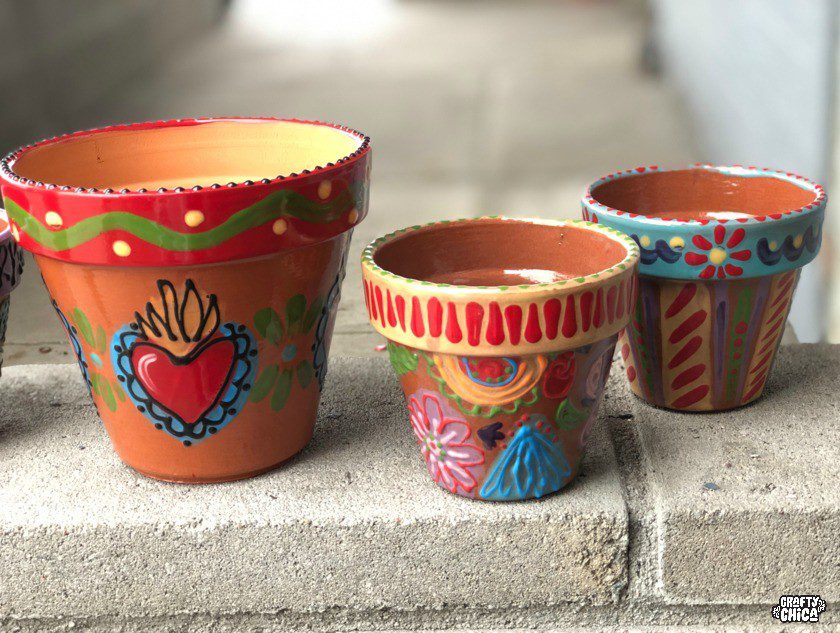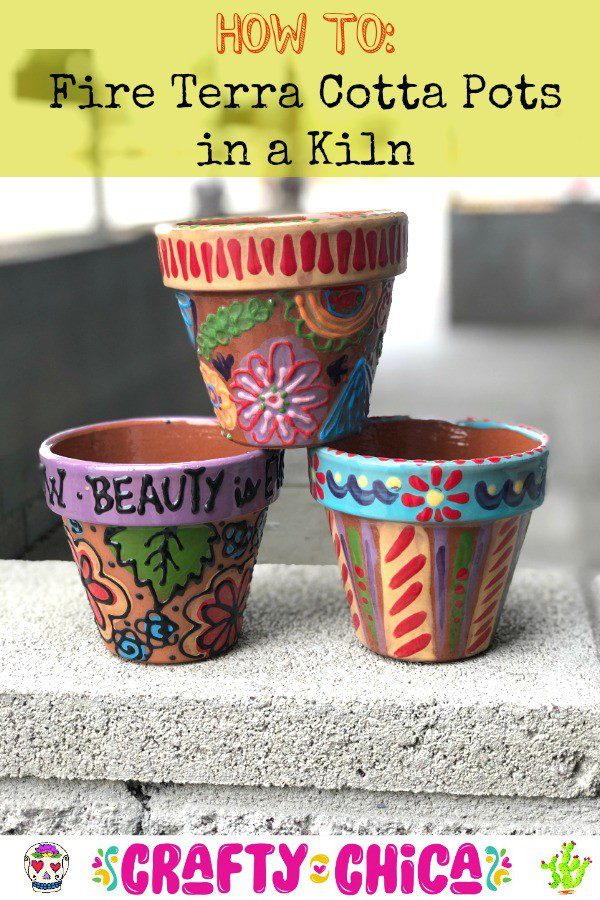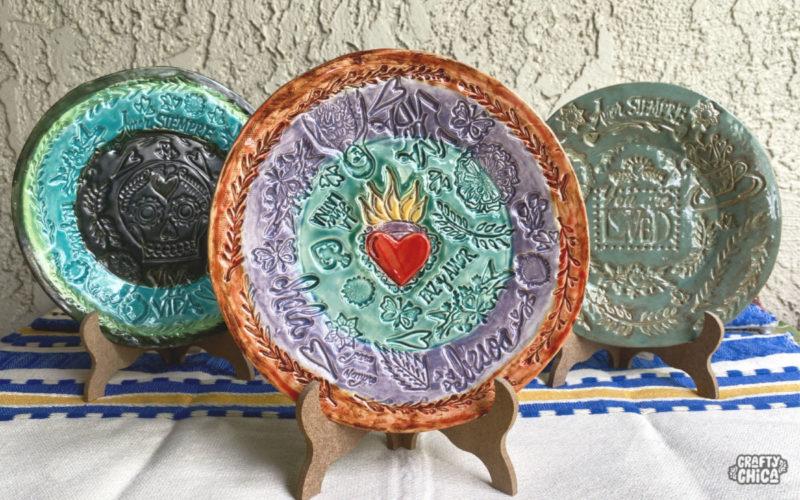How to fire terra cotta pots in a kiln, I wondered. But I felt too chicken to try it out. I couldn’t really find anything online either, maybe one article. Then duh – I finally asked a friend of mine who is a ceramics (and kiln) expert. I tried out the method and hey, it worked!
NOTE: I have a newer Skutt kiln, before doing this I would check with the manufacturer of your kiln to make sure all is well! This worked for me, but since every kiln is different, do your research too!
I’ve always loved painting flower pots, it’s how Patrick and I started our business. We used to paint hundreds of pots for retail stores. But I wanted a different look, I wanted to see if I could actually put these through the kiln process. Thinking how they’ve already been fired once, why not again like I do with all my other bisque?

I bought an array of sizes of Italian terra cotta pots.
If you do this, make sure not to buy the cheapies, I’ve heard they have resin in them. Go with the solid, old-school terra cotta pots. I read an article that said to pretreat them by putting them through the kiln at Cone 04, then adding underglazes, then fire again. I skipped the first fire, figuring they’ve already been through that process. And my pots were brand new, no residue at all.
Wipe them down with a damp sponge to remove any dust or debris.

How to Fire Terra Cotta Pots in a Kiln
Add your underglazes. I used Duncan Concepts, and added details with French Dimensions! I’ve only ever used Duncan underglazes, I love them because the colors are bright and brilliant and work well no matter what designs I’m doing.
Since this was my test batch, I just played with the designs, lots of freestyle action going on here. These all have three coats of each color. I do think the yellow could use one more coat.
After the underglazes dried, I added a coat of Pure Brilliance Clear Glaze.
After that dried, I fired them at Cone 06, medium speed. I didn’t glaze the bottom rims.
They came out so shiny and lovely!

Actually, now that I think of it – some of them I didn’t add the clear glaze.
Duncan Concepts already fires to a shiny finish, so I wanted to see how it looked with the terra cotta staying “raw.”




If you don’t have a kiln, maybe ask your local paint on pottery studio or local arts community center if you can paint and fire pots there.

Dear lord, now that I know this works, I totally want to go buy more terra cotta and paint more! Oh, wait, someone is calling me from afar..hold on…
It’s my kiln – she is such a DIVA!
She wants me to post a picture of her because she said this was her first time and she was really nervous, just like me. Now she said she is a pro and excited for more terra cotta relations. Whatever THAT means!

Thanks for reading, let me know if you try this!








Hi Kathy…..can you use a low temp oven like a Klin, my grandkids asked me this, I have preteens?
You are a very talented lady, thanks for sharing the many beautiful art you do.
Hi Rosalie! Unfortunately, it won’t work because it needs to get up to 1800 degrees…
Hey Kathy, I’ve always wonder the same thing when I paint on tera cotta, glad you had the guts to check it all out, thanks! I am interested in purchasing a kiln but do not know where to start, could you give the model number of the one you use?
Hi! Mine is a KM-818 https://skutt.com/products-page/ceramic-kilns/kmt-818/ I love it!!
Great idea for a project! Is there some way to tell that there is resin in your terra cotta flower pot? (Reading between the lines, it seems like doing a test firing of the pots before glazing is best?)
Yes, that’s probably a good idea! However, I do know the pots from Lowe’s worked beautifully!
This is so intriguing and I love your flair! Would these pots be sturdy enough to use outside? I know regular terra cotta pots will not last outside (I live in the Pacific Northwest).
Thanks!
Great! I’m having a hard time find red planters and light bulb moment?I own a kiln??♀️ Thanks for the tips
after you fire your pots are they still porous? I have a project where the unglazed potion needs to be porous and the glazed part nonporous.
Hello! I am just wondering what happens if a pot does have resin in it? Does it just affect the color of the glaze or are we talking about damage to the kiln? I have some pots that were purchased at Hobby Lobby, but don’t want to experiment with them if it’s going to damage something. Thanks!
Hi! I would make sure they are the solid terra cotta versions…